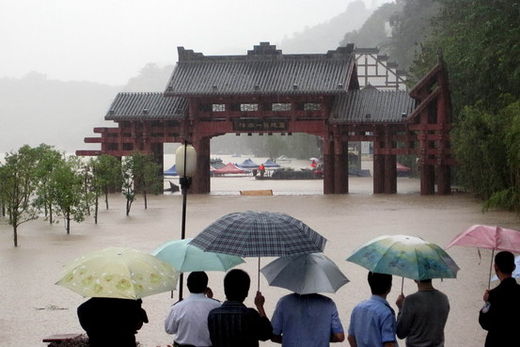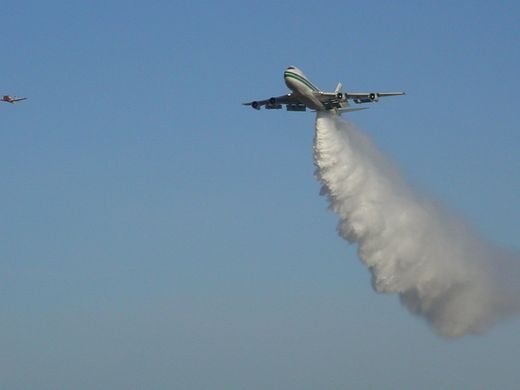
© Getty Images
Fresh from scoring another record grain harvest this year, China now plans to get the weather to heel as well.
Rainmaking has now become part of the government's five-year-term goals, the state-run
China Daily reported Friday. Over the next four years, Beijing wants five regional weather control programs to increase artificial rain by 10 percent, it says.
The plan marks a major expansion of China's "weather modification" efforts, deployed for years in Beijing to sometimes mixed results. Cloud-seeding - accomplished by shooting shells or rockets filled with silver iodide particles into promising puffs of white - was instrumental in clearing the smog out of the skies during the 2008 Olympics and has helped relieve the capital from chronic water shortages. But the effort has occasionally gone horribly, and expensively, awry.
Existing weather modification operations in Beijing and the northeastern province of Jilin currently produce 50 billion cubic meters of artificial precipitation, the
China Daily said, citing the China Meteorological Administration (CMA). The number could read 280 billion cubic meters if "more effective weather intervention measures are taken," the paper said.
"Because clouds are boundless, weather control is boundless," CMA official Zheng Jiangping was quoted by
China Daily as saying.
The paper said the new rainmaking programs would be established in the northwest, south, southwest and north but added that specifics of the plan had yet to be set. The program was expected to cost roughly 1 billion yuan ($157 million) according to an earlier China Daily report.

© n/a
Although the techniques used to marshal the weather are modern, the ambition itself is as old as, well, the Mandate of Heaven. One of Beijing's most famous landmarks, the Temple of Heaven, was built so that Qing Dynasty emperors would have a place to beseech higher powers for plentiful rain and good harvests.
Appropriately, the latest goals for rainmaking are linked to Beijing's aim of maintaining annual grain yield at about 550 million tons through 2020.
While poor harvests as a result of dry weather were often the political death-knell for emperors of yore, the current rulers have been luckier. They just posted a bumper harvest for an eighth year running, breaking all manner of convention in an industry that usually sees one bad year alternate with two or three successive bumpers.
Amid questions over how long China can keep up that level of grain production, the Communist Party doesn't appear to be taking any chances with its own mandate.


But you can seed clouds that are over your land.
The big quesion is not answered: Should you do this?
Nature will simply go around, it will find a way, and the consequences will be whatever they are when nature goes where it has to.
Control of the weather is an illusion.
You should not do this.